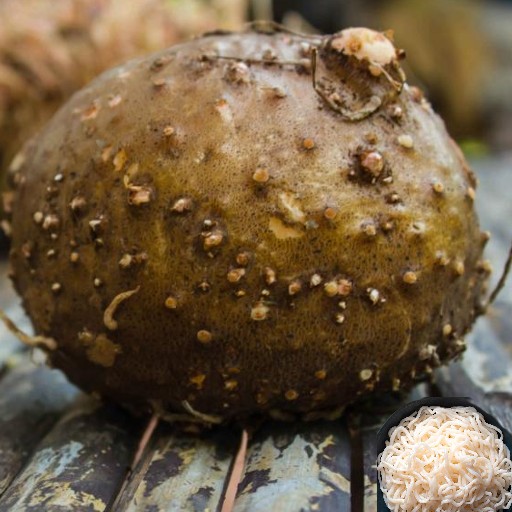
Konjac
Benefits and Recipes
Konjac
Konjac, is also known as Amophophallus, konjaku, elephant yam, devil’s tougue, snake palm and voodoo lily.
Nutritional Benefits of Konjac:
According to article written by Ms. Lana Burgess updated on 14 July 2023 (medically reviewed by Ms. Kathy W. Warwick (RDN.CDCES), and is published on “Medical News Today”, Konjac,
To listen to this article, click below button:1. Konjac may improve type 2 diabetes. Research suggests that consuming a mix of glucomannan, which is a dietary fiber high in konjac plant, and American ginseng can lead to a moderate improvement in the management of type 2 diabetes. Other natural foods that may be good for diabetes.
Other natural foods that may be good for diabetes. Other natural foods that help to control blood sugar.
Other natural foods that help to control blood sugar.
2. Konjac may help weight management. Glucomannan made from konjac may be beneficial for people who are looking to lose weight. Other natural foods that can help managing weight.
Other natural foods that can help managing weight.
3. Konjac may help reduce cholesterol levels. Having high cholesterol increases a person’s risk of heart disease and stroke. Doctors recommend water-soluble fiber to support healthy cholesterol levels and weight management. A 2019 study in rats with diabetes found that administering konjac glucomannan significantly reduced total cholesterol levels, as well as bad cholesterol. Other natural foods that may help to control cholesterol.
Other natural foods that may help to control cholesterol. Other helping heart natural foods.
Other helping heart natural foods.
4. Konjac may prevent constipation. Taking a glucomannan supplement (made from konjac) may help regulate bowel movements and prevent constipation. Other digestive healthy food.
Other digestive healthy food.
5. Konjac may improve skin health. Konjac’s glucomannan content may also help people looking to improve the health of their skin. For example, a 2013 study found that glucomannan may provide benefits as a topical therapy for acne, as well as improve overall skin health. Other skin care and anti-aging natural foods.
Other skin care and anti-aging natural foods.
6. Konjac may help with wound healing. As well as supporting skin health, glucomannan from konjac may also help the body heal wounds more quickly.
 Editor’s view (Click to read more)
Editor’s view (Click to read more) Consumption of new food (Click to read more)
Consumption of new food (Click to read more)
 Do you know? Heterocyclic amine is a chemical that is formed when meat, poultry, or fish is cooked at high temperatures, such as frying, boiling, and barbecuing. “Heterocyclic amines” are carcinogens (substances that may cause cancer). It is also called HCA. Source: National Cancer Institute (of United States)
Do you know? Heterocyclic amine is a chemical that is formed when meat, poultry, or fish is cooked at high temperatures, such as frying, boiling, and barbecuing. “Heterocyclic amines” are carcinogens (substances that may cause cancer). It is also called HCA. Source: National Cancer Institute (of United States)
